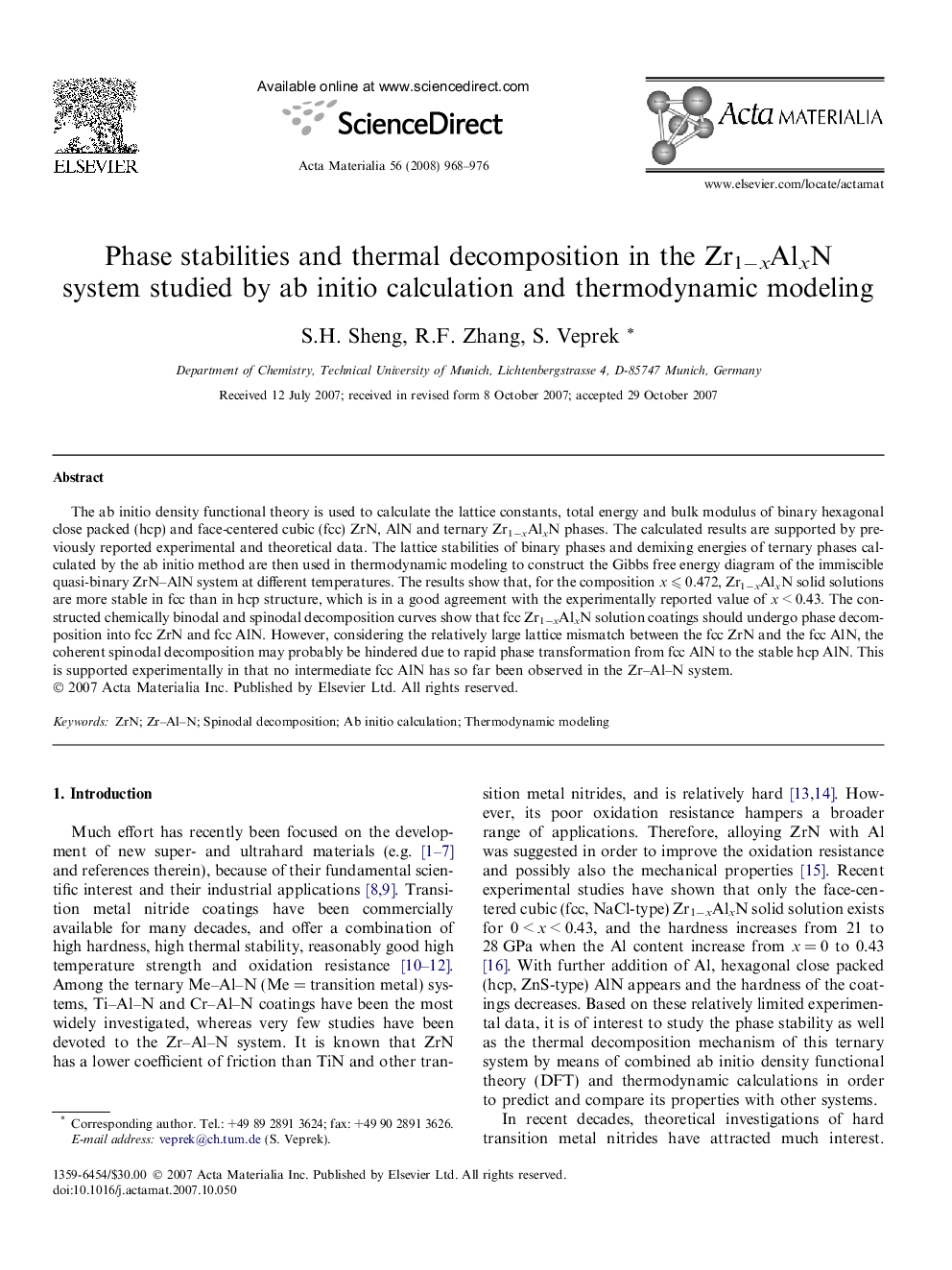| Article ID | Journal | Published Year | Pages | File Type |
|---|---|---|---|---|
| 1448887 | Acta Materialia | 2008 | 9 Pages |
The ab initio density functional theory is used to calculate the lattice constants, total energy and bulk modulus of binary hexagonal close packed (hcp) and face-centered cubic (fcc) ZrN, AlN and ternary Zr1−xAlxN phases. The calculated results are supported by previously reported experimental and theoretical data. The lattice stabilities of binary phases and demixing energies of ternary phases calculated by the ab initio method are then used in thermodynamic modeling to construct the Gibbs free energy diagram of the immiscible quasi-binary ZrN–AlN system at different temperatures. The results show that, for the composition x ⩽ 0.472, Zr1−xAlxN solid solutions are more stable in fcc than in hcp structure, which is in a good agreement with the experimentally reported value of x < 0.43. The constructed chemically binodal and spinodal decomposition curves show that fcc Zr1−xAlxN solution coatings should undergo phase decomposition into fcc ZrN and fcc AlN. However, considering the relatively large lattice mismatch between the fcc ZrN and the fcc AlN, the coherent spinodal decomposition may probably be hindered due to rapid phase transformation from fcc AlN to the stable hcp AlN. This is supported experimentally in that no intermediate fcc AlN has so far been observed in the Zr–Al–N system.
